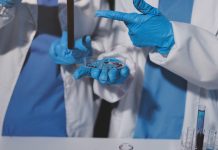The conventional way of producing ammnia, a multi-purpose industrial gas, is by the age old Haber-Bosch process, which calls for high temperature and pressure and emits a load of carbon dioxide. Researcher Ramendra Sunder Dey, of the Institute of Nano Science and Technology, Mohali has devised an alternative process for ammonia manufacturing – interfacing nano-porus with tin sulfide.
This electrochemical synthesis of ammonia, however, yields less, mainly because of the accompanying hydrogen production. To make ammonia, which is a compound of nitrogen and hydrogen, the hydrogen should join hands with nitrogen (a reduction reaction) and not binge away on its own.
In a typical electrochemical ammonia synthesis, the hydrogen evolution reaction competes with the nitrogen reduction reaction, resulting in low yields of ammonia. Dey’s process, however, suppresses hydrogen evolution. Dey sites the high faradic efficiency of 49.3 percent. This can be surely worked upon for industrial preparation of ammonia according to the department of science and technology.

































